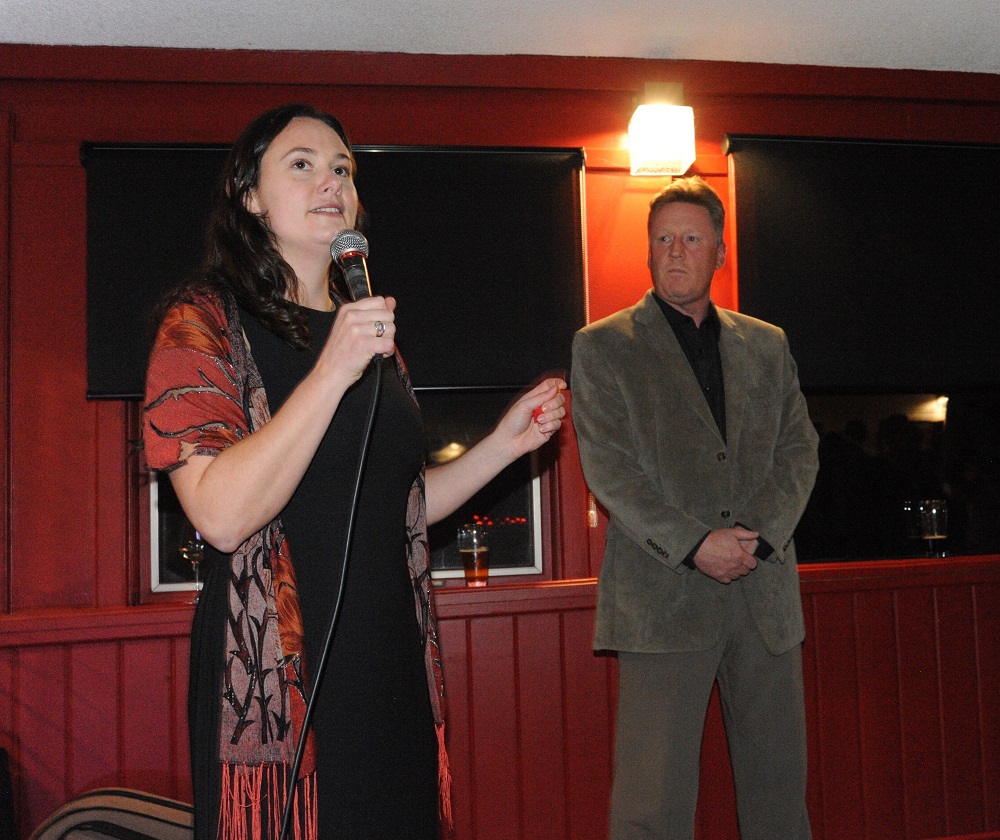County councillors were unwilling to board a bus Feb. 8 that would have allowed staff to prepare and put out a tender for a possible rural transit system for the Highlands.
Director of economic development and tourism, Scott Ovell, and director of planning, Steve Stone, wanted a green light to develop and put out a request for proposals. Ovell said it could result in a detailed operational budget, implementation schedule and service delivery map, “that would clearly lay out how the transit service would operate, and how much it would cost to initiate and subsequently operate.”
He added they weren’t asking council to say ‘yes’ to a service now, but possibly at a later date.
In June 2018, a consultant, the IBI Group, did a public transportation implementation plan. They used a business case created by the Haliburton Transportation Task Force to come up with an outline for a countywide system. A recommendation was made at a Jan. 23, 2019 meeting but council did not proceed. However, $50,000 has been put aside in subsequent years.
In the meantime, the County has taken part in two pilot transit projects. In the spring of 2022, they gave $20,000 to an initiative involving SIRCH, Fleming Crew and the City of Kawartha Lakes Human Services. In addition, council funded a project with Point in Time Centre for Children, Youth and Parents.
New staffers wanted to put it out to tender
Ovell and Stone said it’s well-noted the County has some unique transport challenges, including its geography, population density and demographics. However, they said the need has been expressed for years and now might be the time to finally proceed.
They added, “the need for a public transit service has only been magnified by the impacts of the COVID-19 pandemic and the significant increase in the County’s population.”
The two said they had been contacted by transit service providers over the last year, asking to meet and present options. They said they were given “valuable information on the numerous options if we were to pursue a public transit service.
“With the advancements in technology and proliferation of ride sharing or on-demand services since 2019, more rural municipalities have been able to successfully implement transit services within their communities.”
They thought multiple companies would potentially bid on the project, with multiple transit solutions, “whether it be a fixed route, on-demand, or ride share service, or a combination.”
The IBI document recommended $294,000 a year for a service. At the end of 2022, there was $152,754.16 in a transit reserve. While gas tax funding is not available in the first year of operation, in the second year, the County could get an estimated $68,523. In the third year and beyond, the funding could go up to $126,020.
Councillors say ‘no’
Coun. Murray Fearrey said, “I think it’s something that everybody desires, but it’s not practical in Haliburton County the way we’re located.” For example, he said waterfront property owners likely wouldn’t use a service but would have to subsidize it. He suggested council, “park it for the time being because I just don’t think it’s practical. I know it’s hard to say that, but it’s just reality. It’s distance and it’s sparse population.”
Coun. Cec Ryall was part of the task force six years ago and said the challenges have not changed. However, if free, he did not have a problem with a tender to get more information. However, he wanted council to revisit its past work before spending any money. “I do not want to start from zero.”
Coun. Bob Carter said while it would be wonderful to have a service, the budget estimates appeared “pretty optimistic.” He was also fearful of giving somebody a contract, only to have them say in 18 months’ time, they cannot make it work. “We can’t just be half-committing.” He didn’t feel he would know what he would be committing to financially either, so agreed with parking it.
Coun. Jennifer Dailloux wanted the County to get a better handle on demand. She said there are assumptions but, “who are the people who would say ‘yes’ to this sort of service…on what terms, where they’re located.” She wondered about a community interaction platform.
Coun. Lisa Schell said there was no harm in an RFP that would only cost staff time. “Otherwise, we won’t have any of those answers which people are asking around the table right now. There may be something that we never thought of.”
CAO Mike Rutter said they could spend time gathering data to demonstrate need, such as via the pilot projects, as well as see what other communities are doing. Warden Liz Danielsen said they could also examine what subsidies might be available from other sources.
Council deferred the report, with Danielsen saying they could revisit the file in the future.
That decision was disappointing to Tina Jackson, who has lobbied for public transit.
“In an area as large as Haliburton County, the ability to access health care, food, education, social, recreation, employment opportunities and more is intrinsically tied to one’s ability to get there. With development of the Community Safety and Well Being Plan underway, the need for transportation to accomplish other community goals will be highlighted once again. On the positive side, our population growth has the potential to feed a larger ridership base.
“We are continuing to leave provincial dollars on the table for every year we go without public transportation of some form – dollars that really could be improving the quality of life for Haliburtonians.”





